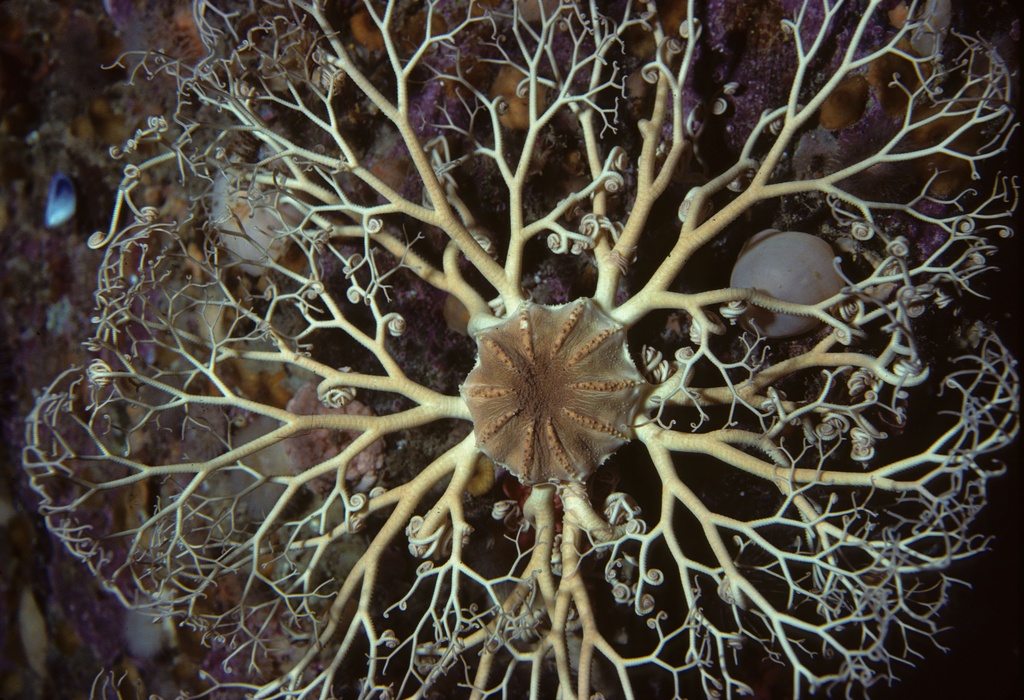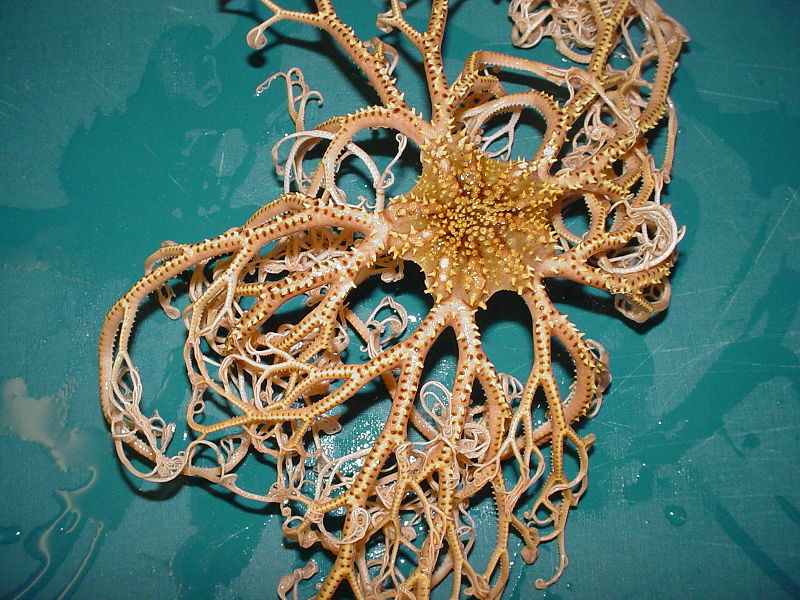Basket Star: An Extraordinary Creature

The basket star, scientifically known as Astroboa nuda, is a remarkable marine creature that belongs to the phylum Echinodermata. As its name suggests, this unique organism possesses a star-shaped appearance and intricate basket-like arms. Its captivating beauty and intriguing behavior have captivated marine biologists and enthusiasts alike.
Physical Characteristics

The basket star has a central disc with five arms that radiate outward, similar to other starfish species. However, unlike most starfish, its arms are highly branched and have an intricate web-like structure, resembling a delicate basket. These arms can grow to lengths of up to one meter, allowing the basket star to capture prey and move across the ocean floor effortlessly.
Habitat and Distribution

Basket stars are predominantly found in the deep-sea environments of the Atlantic, Pacific, and Indian Oceans. They inhabit depths ranging from 200 to 2,000 meters, where they make their homes on rocky substrates, coral reefs, and even shipwrecks. Due to their preference for dark and secluded habitats, they are rarely observed by humans unless captured on underwater cameras or during deep-sea exploration.
Feeding Behavior and Predators
Basket stars are primarily nocturnal predators, using their delicate yet efficient arms to capture small marine organisms, such as shrimp, crustaceans, and other invertebrates. With their long and flexible arms, they create a network of sticky mucus-covered strands, which provide both support and a trap for unsuspecting prey. Once caught, the basket star’s arms bring the captured organisms towards its central mouth, where digestion takes place.
Reproduction and Life Cycle
Like other echinoderms, the basket star has separate sexes, with males and females releasing their gametes into the water for external fertilization. After fertilization occurs, the eggs hatch into free-swimming larvae that represent the initial stage of their complex life cycle. As they grow, these larvae transform into juvenile basket stars, resembling miniature versions of the adults. It takes several years for the juveniles to reach full maturity and develop the extensive arm branching seen in adult basket stars.
Relation to Humans
The basket star remains largely unknown to the general public due to its deep-sea habitat. Its elusive nature and rare encounters make it a subject of fascination for marine biologists and researchers. The study of basket stars contributes to a better understanding of marine biodiversity and the intricate ecological relationships within deep-sea ecosystems. Furthermore, their unique and captivating appearance makes them popular subjects for underwater photography and filming.
Conservation and Threats
Owing to their deep-sea dwelling and limited interactions with human activities, basket stars do not face significant threats from direct exploitation or habitat destruction. However, climate change, ocean acidification, and deep-sea mining activities pose potential risks to these fragile organisms. Furthermore, the lack of knowledge about their population sizes and trends makes it challenging to assess and manage potential risks effectively. Conservation efforts should focus on understanding their ecology and implementing measures to protect their fragile habitats.
Conclusion
In conclusion, the basket star is a truly remarkable creature that demonstrates the astonishing diversity found in the depths of our oceans. Its intricate branching arms and unique hunting strategies set it apart from other starfish species. While relatively unknown to the general public, the basket star’s beauty and the mysteries surrounding its behavior continue to captivate scientists and marine enthusiasts. Further research and conservation efforts are necessary to ensure the long-term survival of this extraordinary creature and the delicate ecosystems it inhabits.
